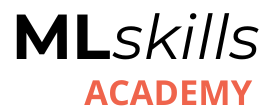Generative Models
Project Overview:
Welcome to our Machine Learning project! This project aims to explore and apply various supervised and unsupervised learning algorithms using three different datasets. We will use one dataset for supervised learning to predict loan defaulters, dataset for
unsupervised learning to analyze eCommerce events history and a dataset from healthcare. Additionally, participants have the flexibility to explore and use any other datasets for further analysis.
Please submit your assignment to [email protected]
Dataset Overview:
Health Insurance
Coverage:
Context: Coverage rates before and after the Affordable Care Act.
Source: https://www.kaggle.com/datasets/hhs/health-insurance
Description: This dataset provides health insurance coverage data for each state and the nation, including variables such as uninsured rates before and after Obamacare, estimates of individuals covered by employer and marketplace healthcare plans, and enrollment
in Medicare and Medicaid programs.
Loan Prediction Based on Customer Behavior:
Context: Predict who possible Defaulters are for the Consumer Loans Product.
Source: https://www.kaggle.com/datasets/subhamjain/loan-prediction-based-on-customer-behavior
Description: This dataset contains information about customers applying for loans, including attributes such as credit score, income, loan amount, loan term, etc.
eCommerce Events
History in Cosmetics Shop:
Context: This dataset contains 20M users’ events from an eCommerce website.
Source: https://www.kaggle.com/datasets/mkechinov/ecommerce-events-history-in-cosmetics-shop
Description: This dataset provides information about user interactions with an eCommerce website, including events such as views, clicks, add to cart, and purchases.
Tasks:
Supervised Learning:
Dataset Selection: Select any data from the above 3 or anything from Kaggle
Steps:
1. Data Exploration and Preprocessing:
· Explore the dataset to understand its structure, distributions, and any missing values.
· Handle missing values, encode categorical variables, and perform any necessary data transformations.
2. Model Building:
· Select appropriate supervised learning algorithms (e.g., logistic regression, decision trees, random forests) for loan prediction.
· Split the dataset into training and testing sets.
· Train multiple models using different algorithms and hyperparameters.
· Evaluate model performance using metrics such as accuracy, precision, recall, F1score, and ROCAUC.
3. Hyperparameter Tuning:
· Finetune the hyperparameters of selected models using techniques like grid search or random search.
· Compare the performance of tuned models and select the best performing one.
4. Model Interpretation and Analysis:
· Interpret the results of the best performing model.
· Analyze feature importance to understand which factors contribute most to loan approval.
Unsupervised Learning:
Dataset Selection: Select any data from the above 3 or anything from Kaggle (Don’t repeat the same data used for supervised learning)
Steps:
1. Data Exploration and Preprocessing:
· Explore the dataset to understand user behavior patterns and the distribution of events.
· Preprocess the data as needed, including handling missing values, scaling features, etc.
2. Clustering:
· Apply clustering algorithms (e.g., Kmeans, hierarchical clustering) to group similar users based on their interaction
patterns.
· Evaluate the quality of clusters using metrics such as silhouette score or Davies–Bouldin index.
3. Dimensionality Reduction:
· Implement dimensionality reduction techniques (e.g., PCA) to visualize and potentially reduce the dimensionality of the dataset.
· Visualize the reduced dimensional data to gain insights into user behavior patterns.
Deliverables:
Participants are expected to provide the following deliverables:
· IPython notebook (.ipynb) containing code implementation of supervised and unsupervised learning tasks.
· Documentation in PDF format explaining the steps, results, and conclusion of the project.
Evaluation Criteria:
Submissions will be evaluated based on the following criteria:
· Technical proficiency in implementing ML algorithms and techniques.
· Clarity and organization of documentation.
· Depth of analysis and insights derived from the results
· Creativity and innovation in problem solving.
Conclusion:
Thank you for participating in our Machine Learning project! We look forward to seeing your contributions and insights. If you have any questions or need assistance, feel free to reach out to us.

